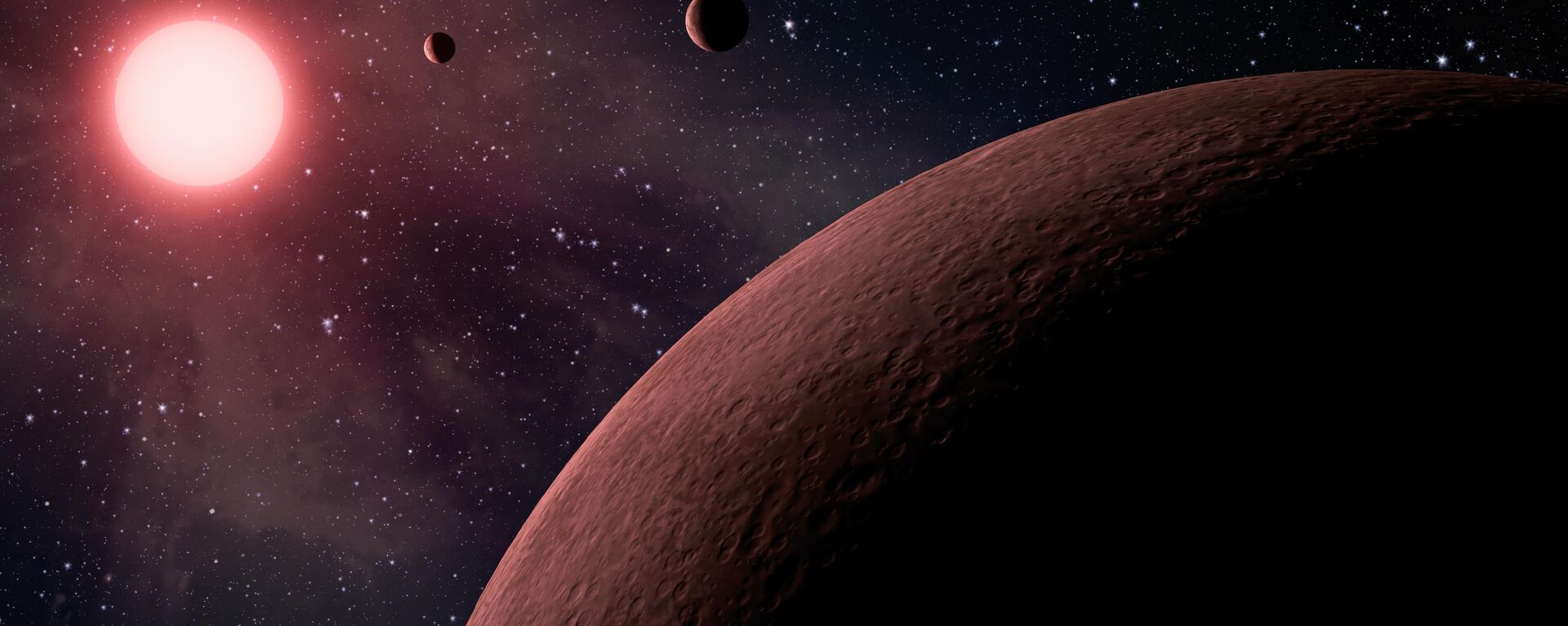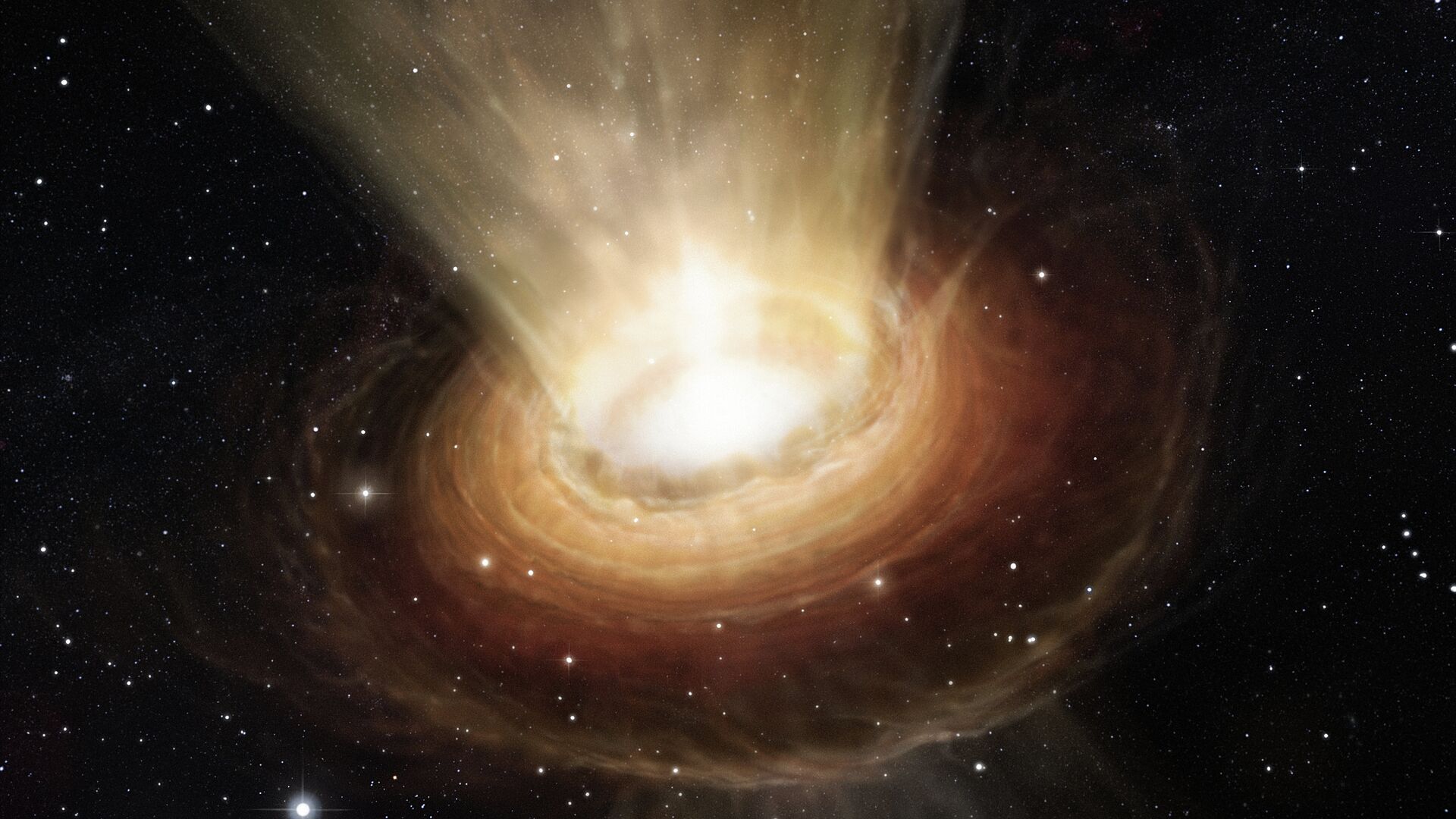https://sputnikglobe.com/20230512/supermassive-black-hole-triggered-largest-cosmic-explosion-in-history-1110284589.html
Supermassive Black Hole Triggered Largest Cosmic Explosion in History
Supermassive Black Hole Triggered Largest Cosmic Explosion in History
Sputnik International
The flare-up was first detected in 2020 by the Zwicky Transient Facility in California, which surveys the night sky for sudden increases in brightness that could signal supernovaes or passing asteroids and comets.
2023-05-12T18:55+0000
2023-05-12T18:55+0000
2023-06-20T17:11+0000
beyond politics
science & tech
astronomy
black hole
space explosion
royal astronomical society
space exploration
https://cdn1.img.sputnikglobe.com/img/102429/55/1024295573_0:226:4000:2476_1920x0_80_0_0_e442f4aa6429cb9f63330d1e35e64af5.jpg
Scientists have captured the largest cosmic explosion ever witnessed, which has been described as a fireball “100 times the size of the solar system” and 10 times brighter than any known supernova. The event has so far lasted over three years and is the most energetic explosion ever recorded.Named AT2021lwx, the explosion was traced to eight billion light years away and is believed to have been triggered by a giant cloud of gas being consumed by a supermassive black hole.It is thought that the cloud of gas may have originated from the large “doughnut” that typically surrounds black holes, but it is unclear what caused it to be knocked off course from its orbit and consumed by the black hole.Dr. Philip Wiseman, an astronomer at Southampton University who led the observations, said that “in three years, this event has released about 100 times as much energy as the sun will in its 10bn-year lifetime.” The original research has been published in Monthly Notices of the Royal Astronomical Society.As the material spiraled towards the black hole’s event horizon (its spherical outer boundary), it would have given off vast amounts of heat and light, illuminating a portion of the doughnut and heating it to 12,000-13,000 C.While the explosion is not the brightest phenomenon ever witnessed, it has lasted longer than any previously known event, making its overall energy release far greater. The authors speculate that some of the material surrounding supermassive black holes may have been disrupted, possibly by a collision of galaxies, and sent inwards.
https://sputnikglobe.com/20200228/astronomy-student-discovers-17-new-planets-including-earth-like-one-1078434698.html
https://sputnikglobe.com/20230428/repeating-alien-radio-signals-from-space-may-unlock-one-of-astronomys-mysteries-1109916456.html
Sputnik International
feedback@sputniknews.com
+74956456601
MIA „Rossiya Segodnya“
2023
Sputnik International
feedback@sputniknews.com
+74956456601
MIA „Rossiya Segodnya“
News
en_EN
Sputnik International
feedback@sputniknews.com
+74956456601
MIA „Rossiya Segodnya“
Sputnik International
feedback@sputniknews.com
+74956456601
MIA „Rossiya Segodnya“
the most massive explosion ever registered in space, black hole explosion, space event, cosmic exploxsion
the most massive explosion ever registered in space, black hole explosion, space event, cosmic exploxsion
Supermassive Black Hole Triggered Largest Cosmic Explosion in History
18:55 GMT 12.05.2023 (Updated: 17:11 GMT 20.06.2023) The flare-up was first detected in 2020 by the Zwicky Transient Facility in California, which surveys the night sky. The explosion initially remained unnoticed, but after gradually getting brighter follow-up observations, its distance could be calculated, and its scale appreciated.
Scientists have captured the largest cosmic explosion ever witnessed, which has been described as a fireball “100 times the size of the solar system” and 10 times brighter than any known supernova. The event has so far lasted over three years and is the most energetic explosion ever recorded.
Named AT2021lwx, the explosion was traced to eight billion light years away and is believed to have been triggered by a giant cloud of gas being consumed by a supermassive black hole.
It is thought that the cloud of gas may have originated from the large “doughnut” that typically surrounds
black holes, but it is unclear what caused it to be knocked off course from its orbit and consumed by the black hole.

28 February 2020, 22:13 GMT
Dr. Philip Wiseman, an astronomer at Southampton University who led the observations, said that “
in three years, this event has released about 100 times as much energy as the sun will in its 10bn-year lifetime.” The original research
has been published in Monthly Notices of the Royal Astronomical Society.
As the material spiraled towards the
black hole’s event horizon (its spherical outer boundary), it would have given off vast amounts of heat and light, illuminating a portion of the doughnut and heating it to 12,000-13,000 C.
While the explosion is not the brightest phenomenon ever witnessed, it has lasted longer than any previously known event, making its overall
energy release far greater. The authors speculate that some of the material surrounding supermassive black holes may have been disrupted, possibly by a collision of galaxies, and sent inwards.




